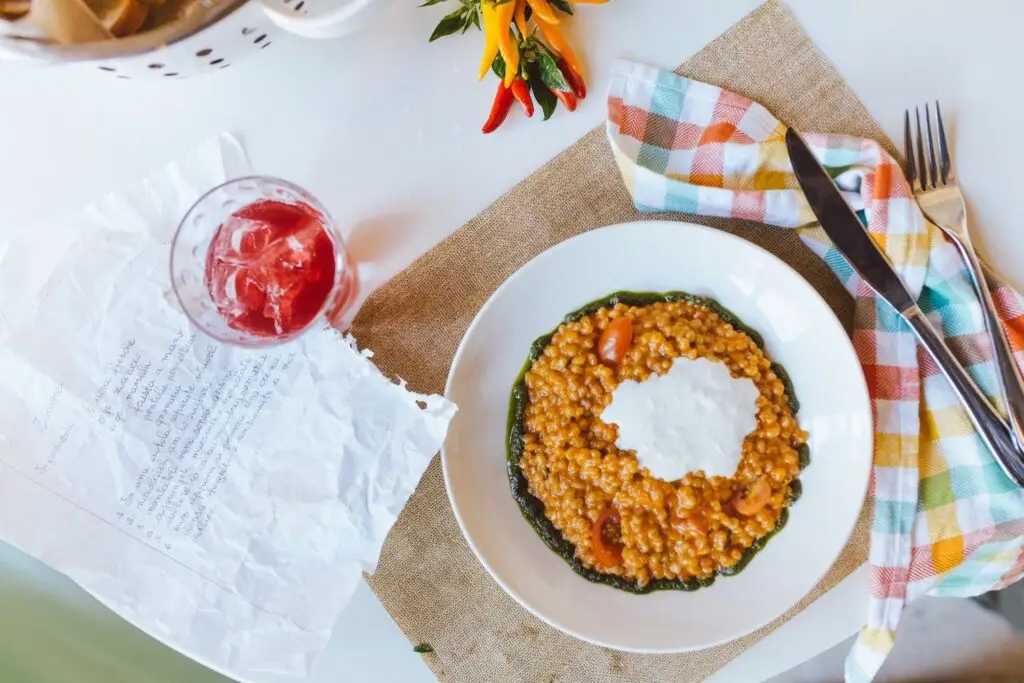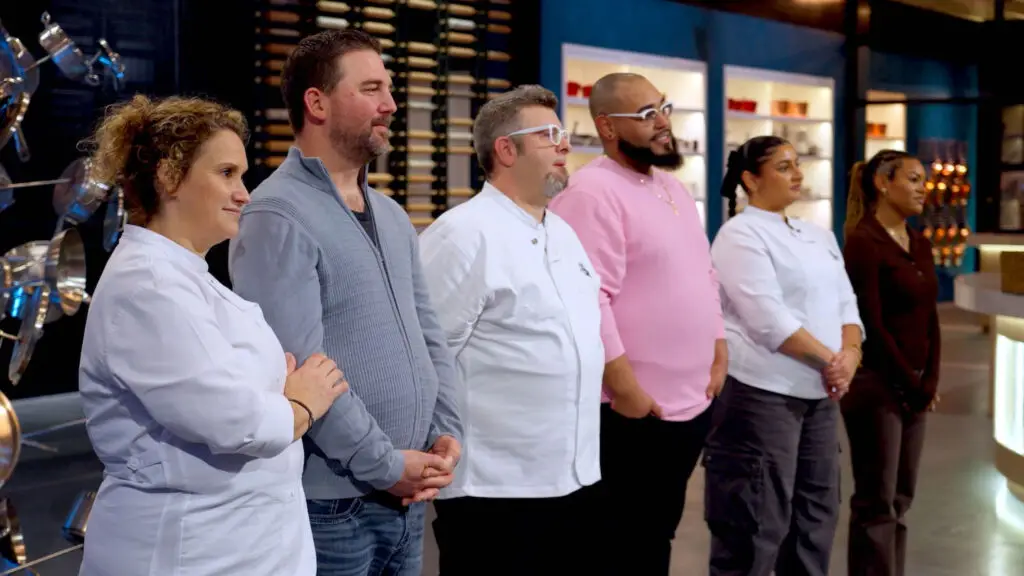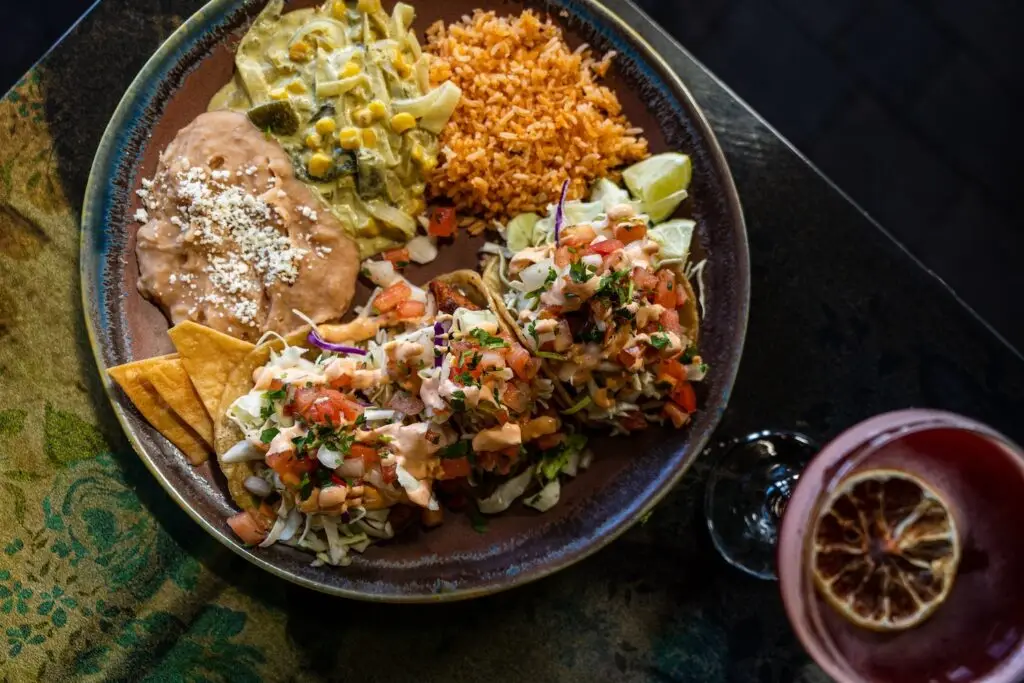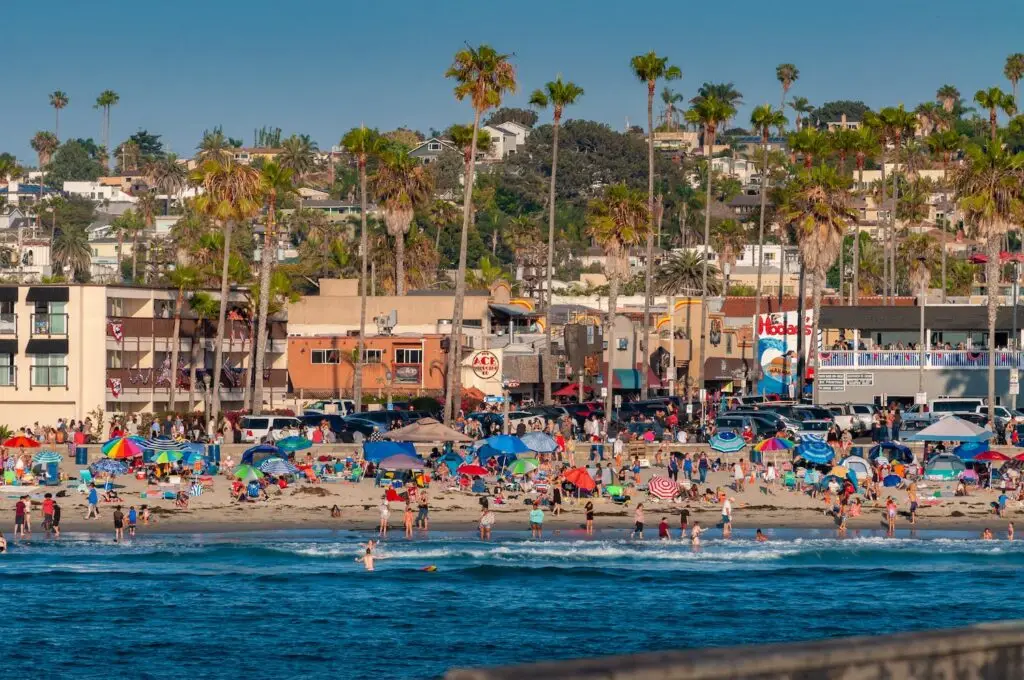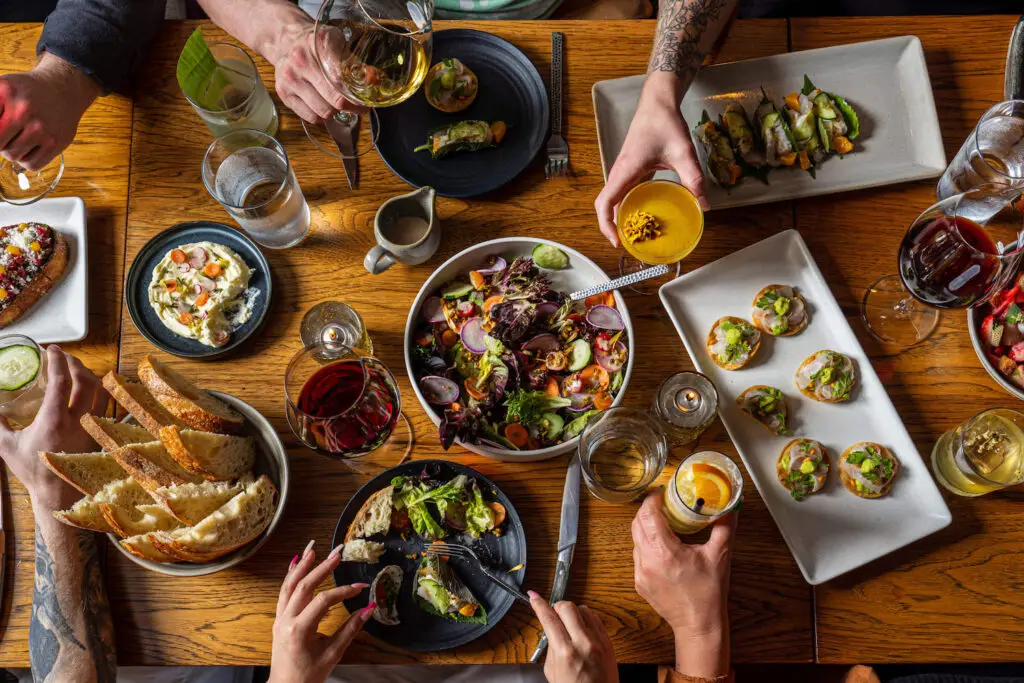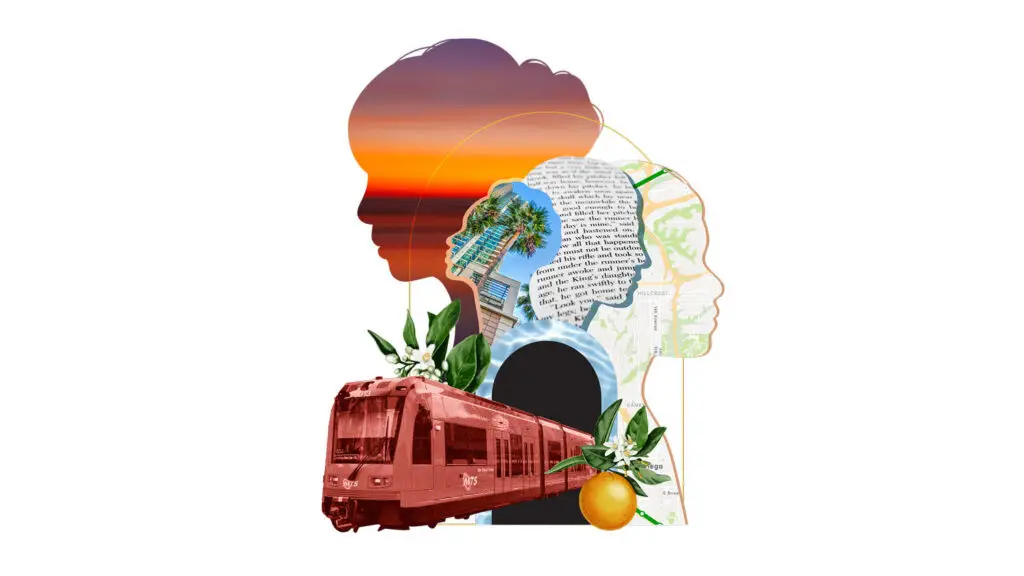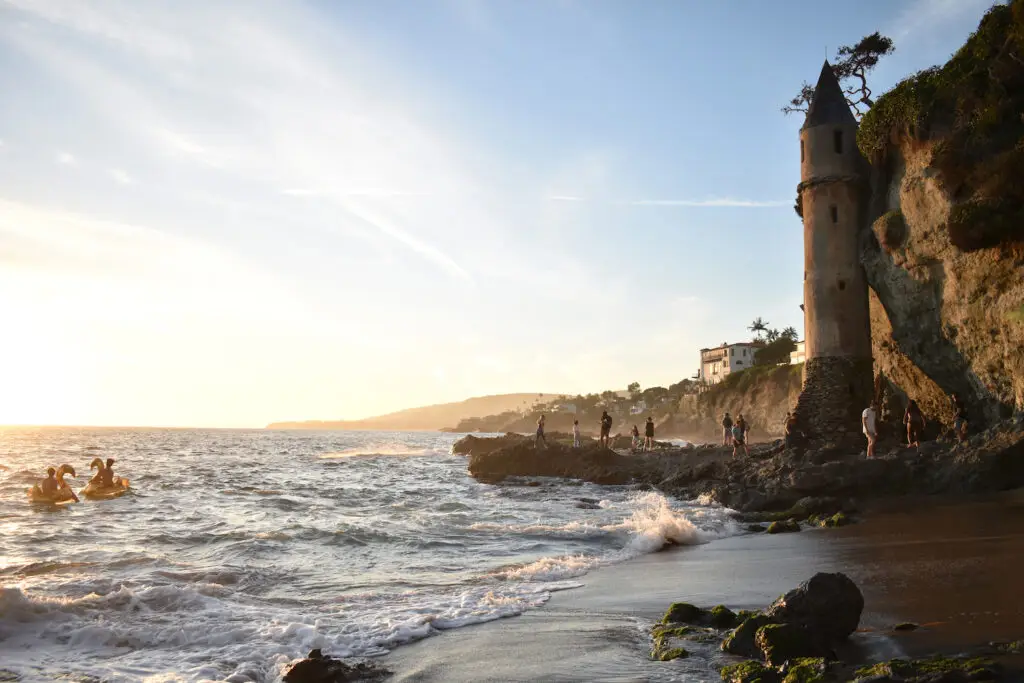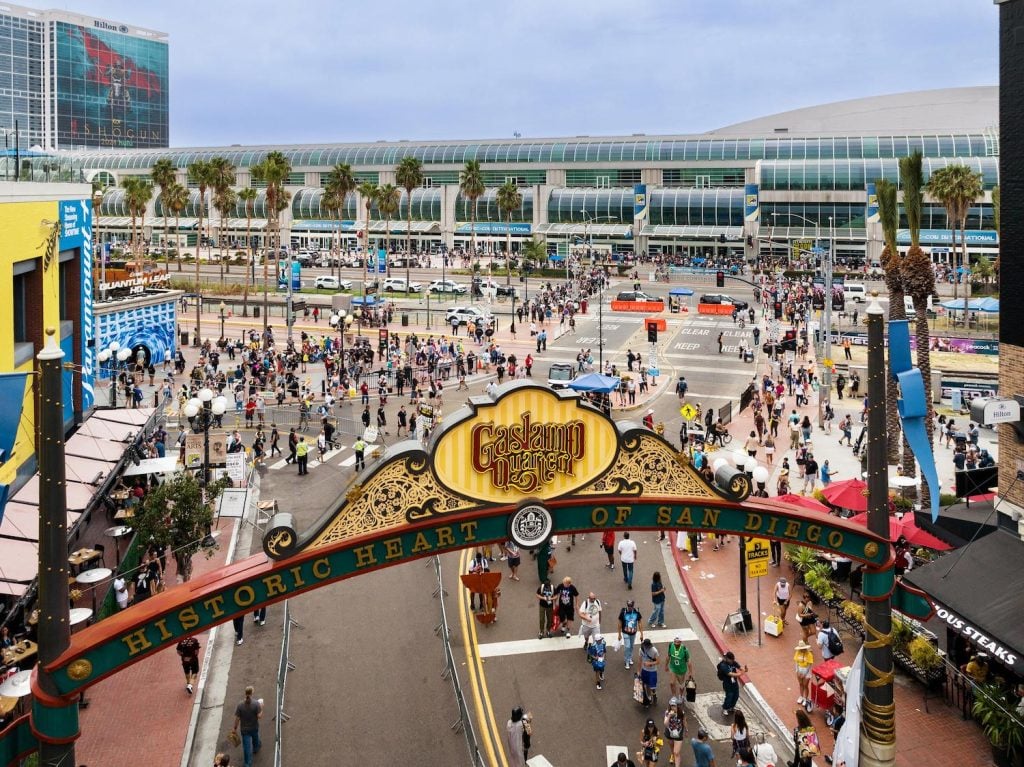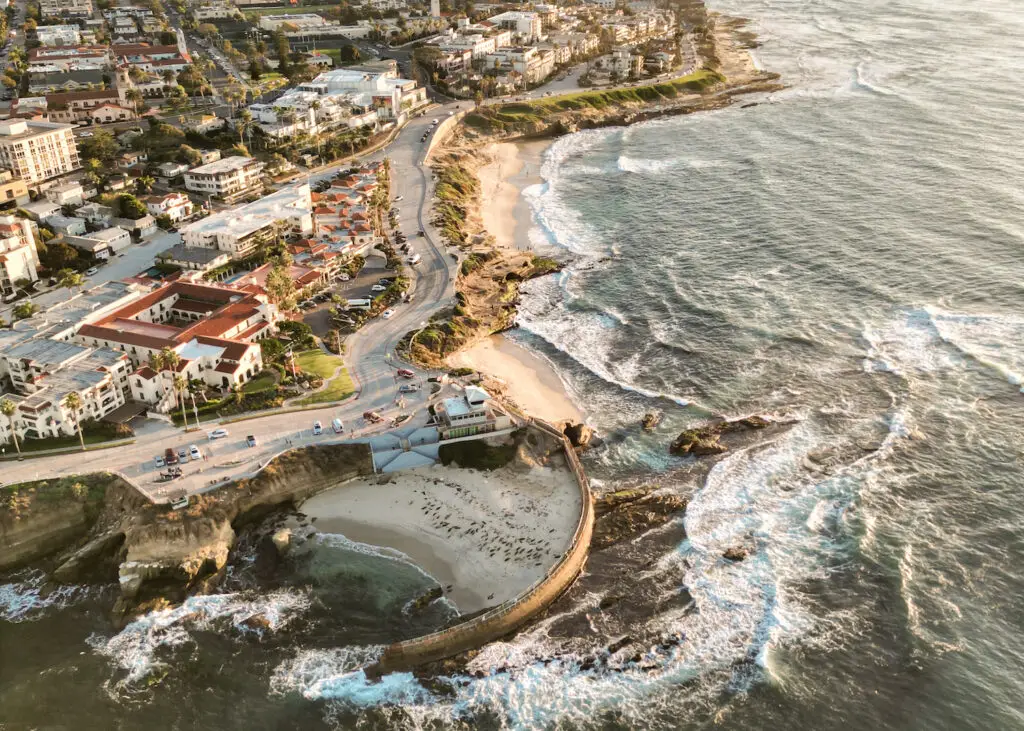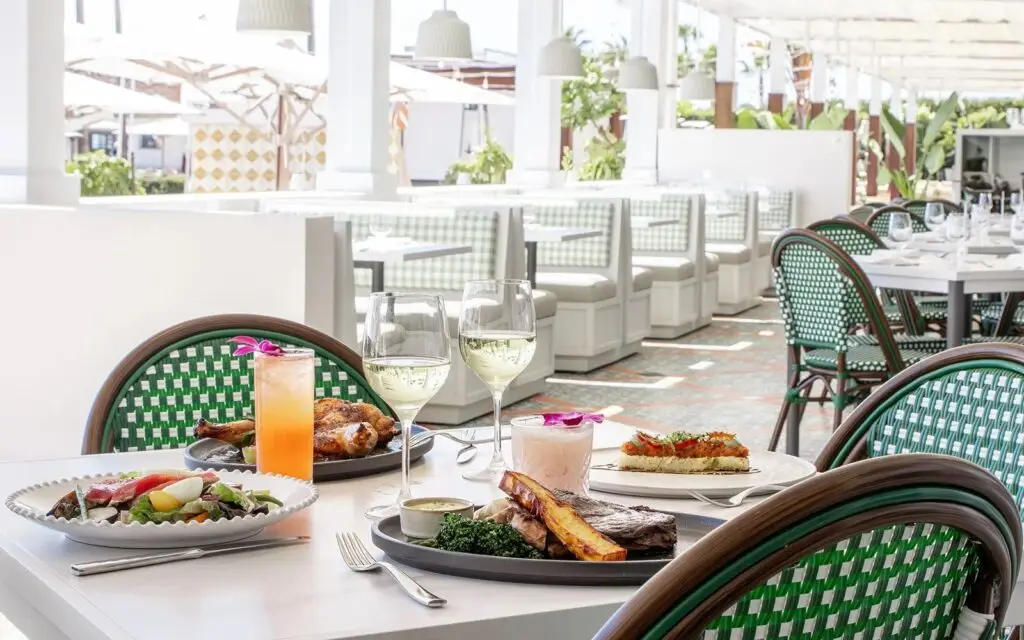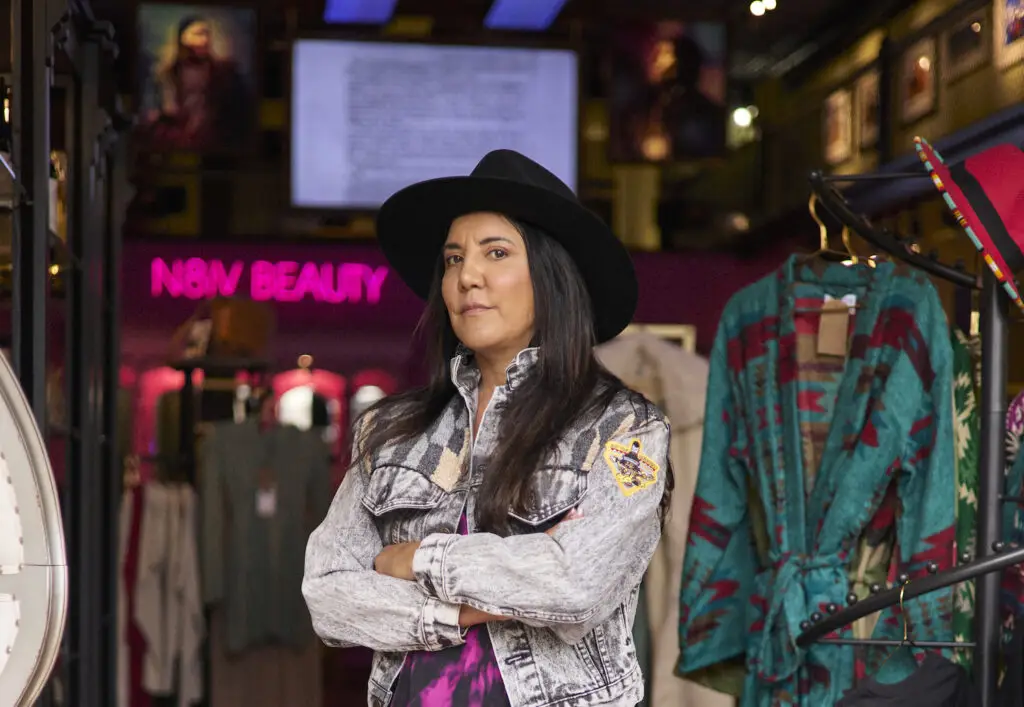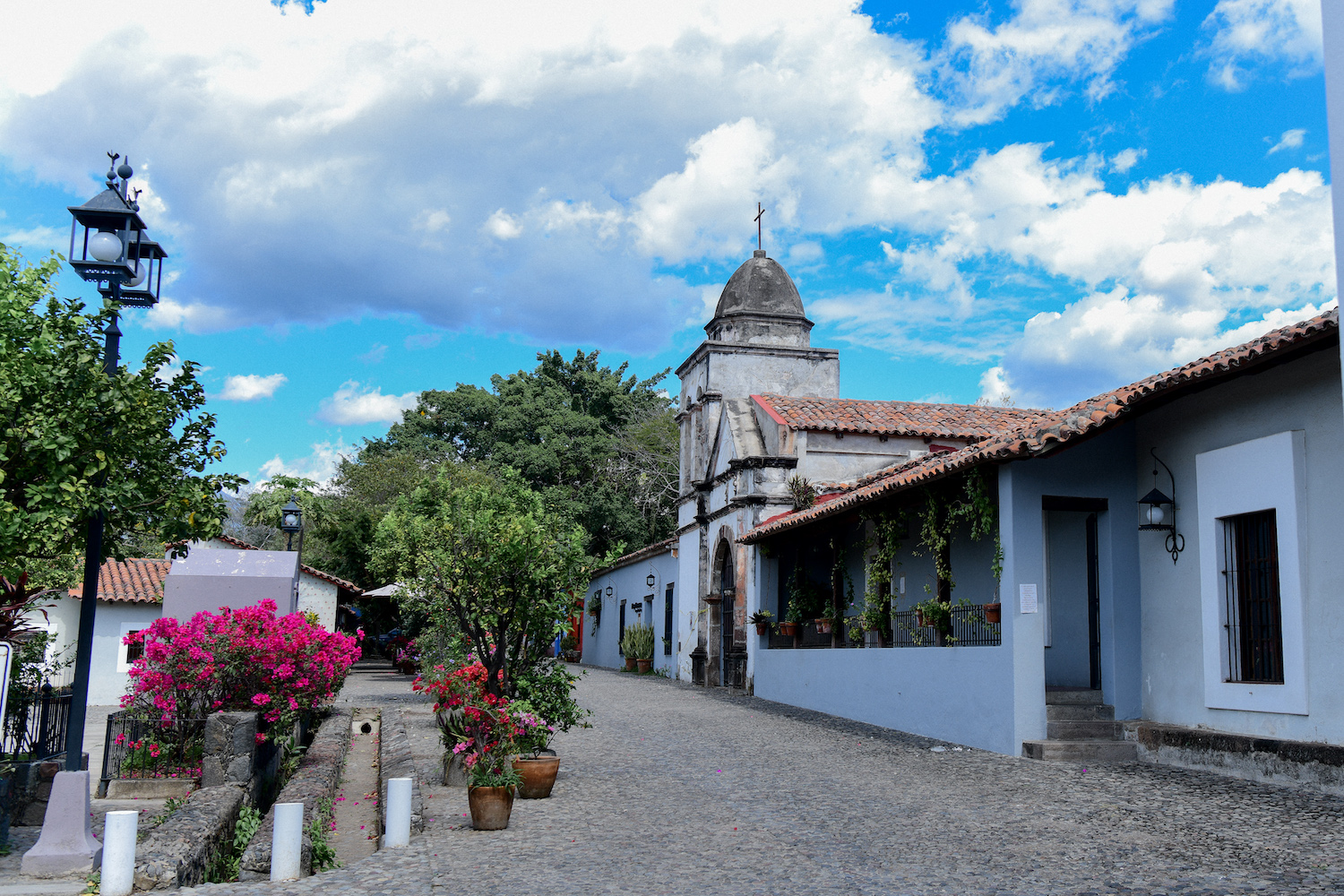My father and his six siblings grew up in Comala, a cozy town in the small, coastal Mexican state of Colima, about three hours by plane from San Diego. I spent childhood summers visiting but had returned only once since my parents split in 2010.
I recalled Colima mostly in senses: the sweet scent of ripe guava, the croak of white-lipped frogs and itch of mosquito bites, the patter of rain on a neighbor’s pool, surrounded by lush gardens. Monolingual, I couldn’t speak much to my grandmother, with whom I share a name, but I remember her hugs and the way she’d let my brother and I splash in the dish basin in her open-air kitchen, which sat on the edge of the large, grassy courtyard in the heart of her house.
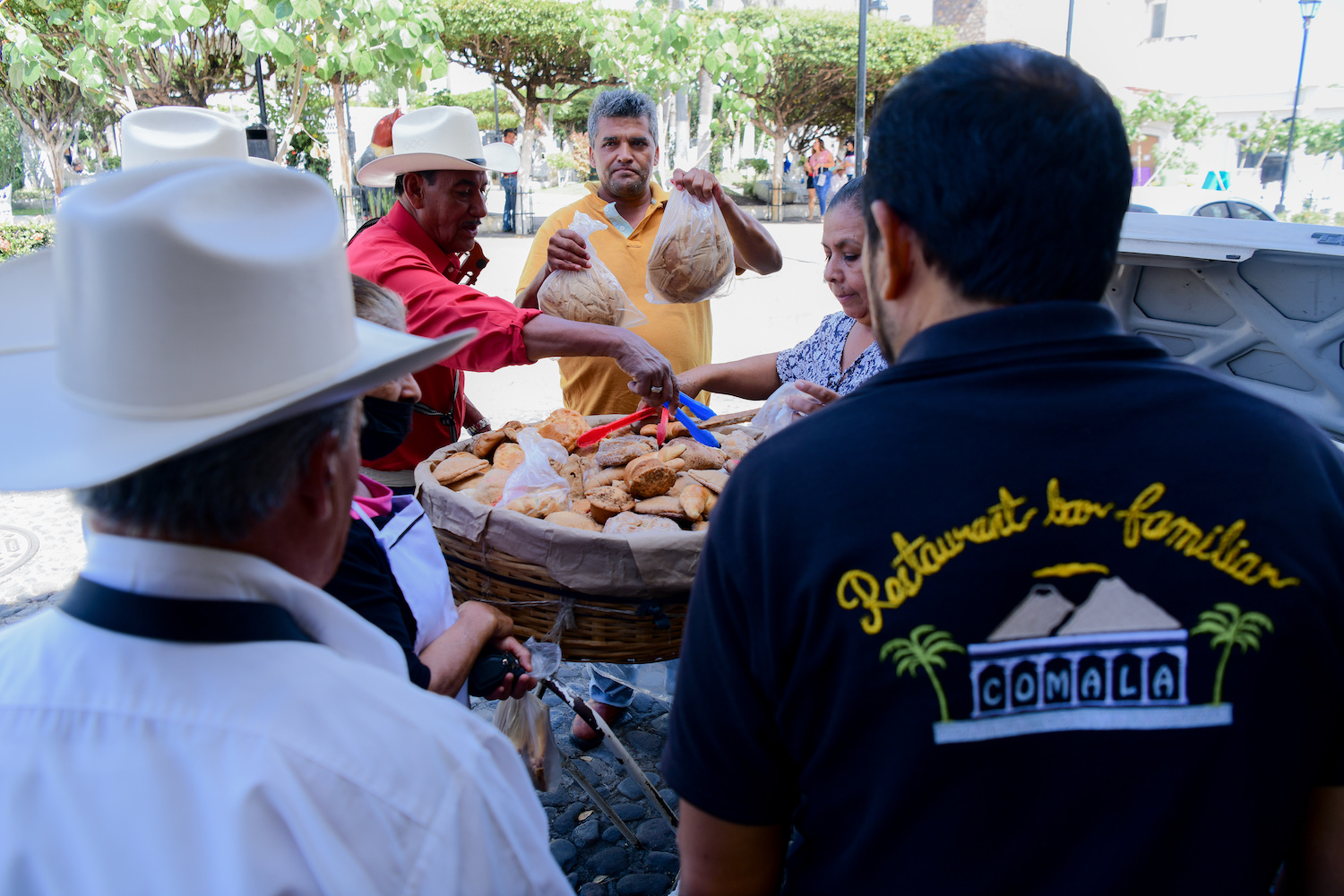
Customers flock to a vendor selling pan dulce on the streets of Comala.
I was in college when word came that she’d passed. Sadly, we hadn’t talked in over a decade. I regretted that I’d never really known her, and over time I felt myself longing to better understand her world. I downloaded the Duolingo app and logged lessons day after day for years, building upon several semesters of middle school Spanish.
Still, even as my language skills grew, other reasons kept me from returning to Colima. I’m not on good terms with my father, and I wasn’t sure how his side of the family would receive me. And, then, the fact that I’m gay. My Mexican relatives represented a whole swath of new—very Catholic—people to come out to.
But I knew I’d regret not trying. I messaged my dad’s younger sister Raquel on Facebook, asking if I could come visit. I mentioned my girlfriend and did not mention my dad.
“Por supuesto,” she wrote back quickly. Of course.
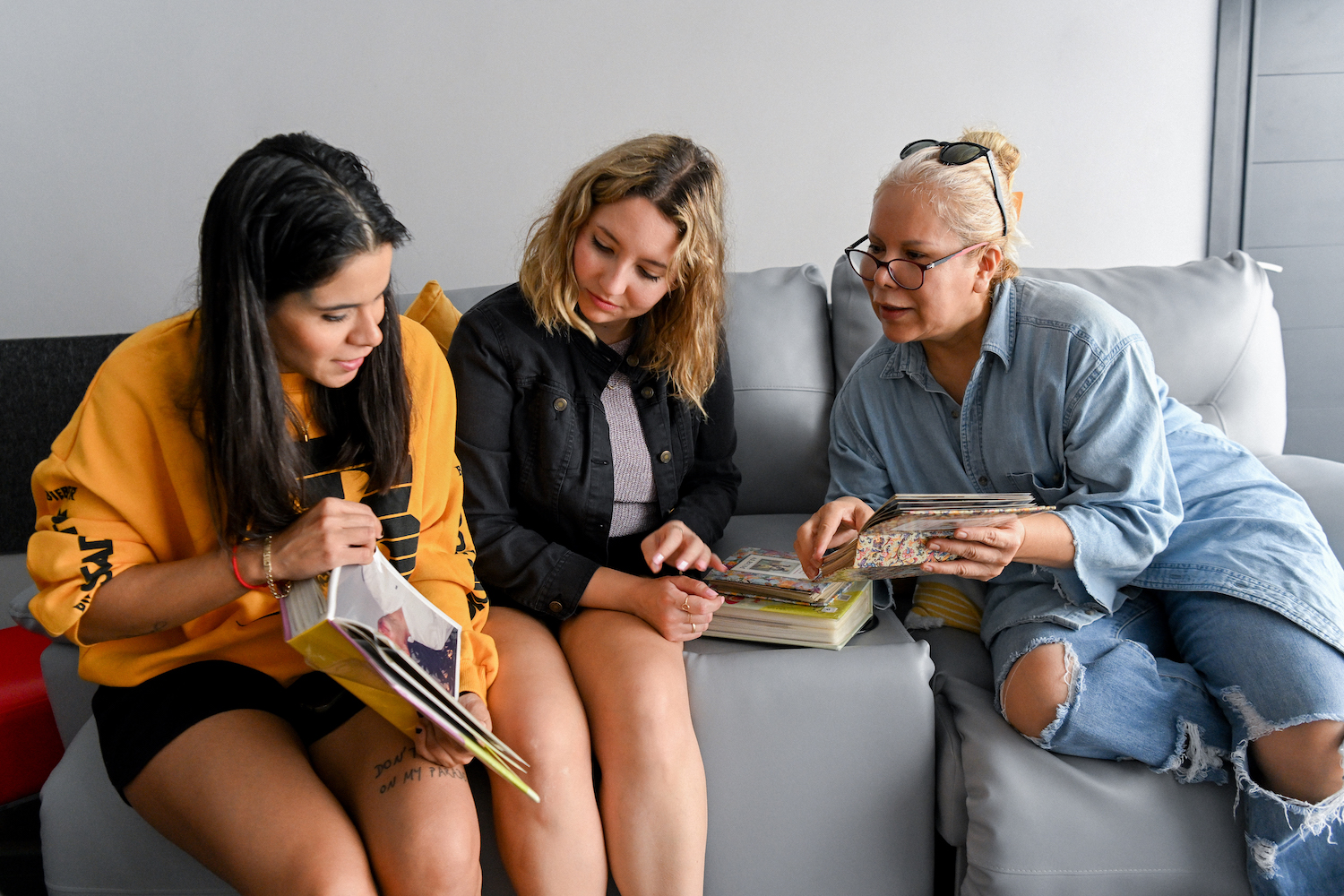
The author (center) and her family comb through albums of old photos.
I look like my tía Raquel. The thought surprised me the first time it occurred, as I fastened a hoop earring below my slicked-back bun. It dangled above the collar of my oversized white button-down.
I hadn’t seen Raquel since I was 11, and I couldn’t quite picture her face. But I recognized in the ensemble touches of the casually glamorous style that I envied as a child. And it seems other people see it, too. When I step into Mexican-owned businesses—fruterías, coffee shops—dressed like her, cashiers greet me in Spanish. If I’m in my winter turtlenecks, my fine hair loose around my shoulders, people seem to see my white American mother more than my Mexican father. They say “Good morning” instead of “Buenos días.” It makes me curious who I really resemble.
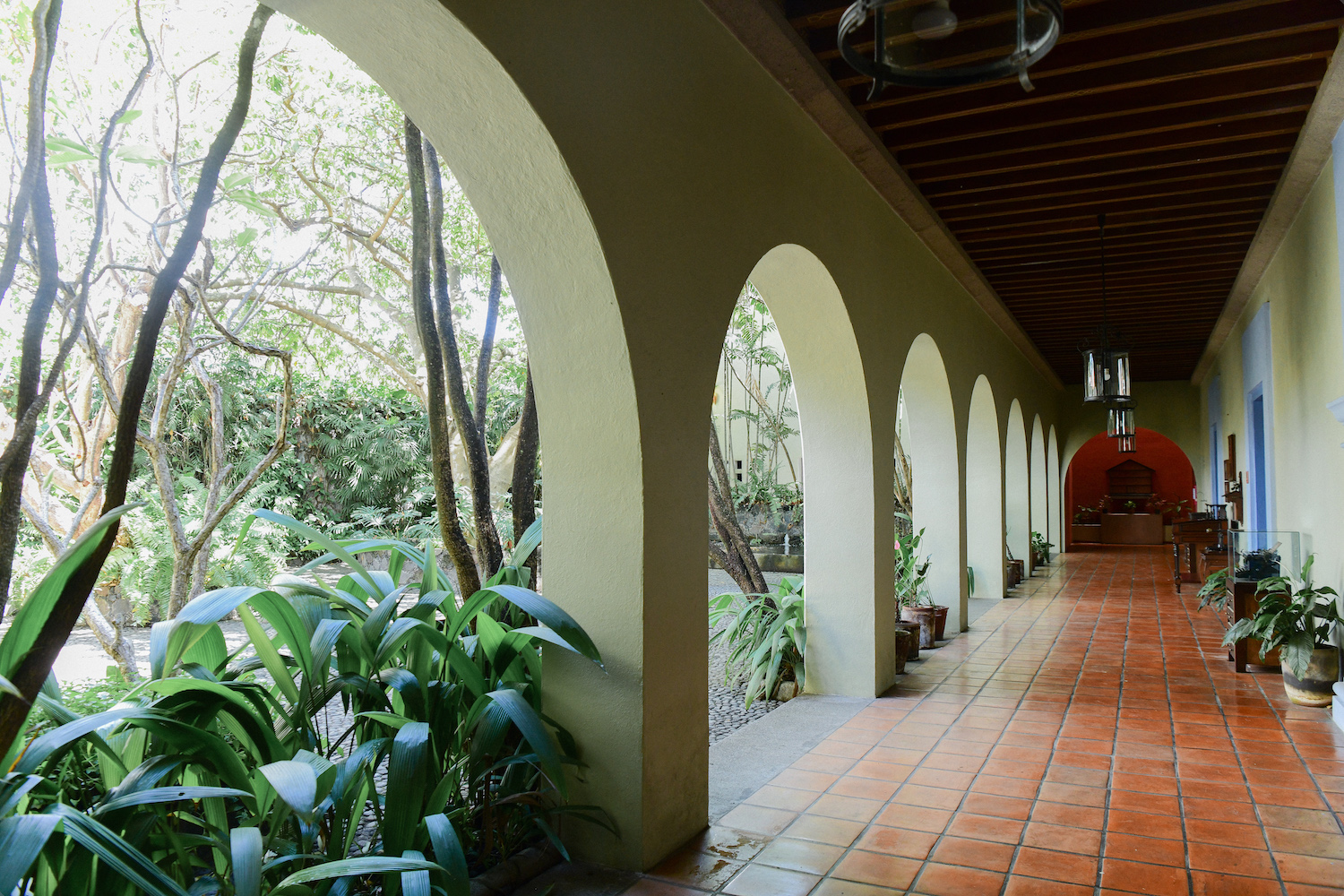
Rooms full of lovely furniture and historical artifacts frame a lush courtyard at the Alejandro Rangel Hidalgo University Museum.
At Raquel’s large, modern house in Colima’s capital city of the same name, I finally have a chance to search her face, wondering what features we might share. Bound by my so-so Spanish skills, I try not to be frustrated that I can’t yet ask everything I want to know about her childhood, her memories, the sort of person my grandmother really was.
She’s patient, though, as I stumble over conjugations, and she shows me a picture of her daughter Celeste and a young woman I don’t recognize. “That’s Celeste’s girlfriend, Marcella,” she tells me.
I stifle a gasp. I’d had no idea Celeste dated women. I realize she paved the way for that unblinking “of course.”
Raquel digs out old photo albums, showing me my abuela at 6 or 7, looking solemn in a school photo, then my uncle Reyes, Raquel’s husband, who’d died of Covid. It’s hard with the language barrier, but I can see shades of it: her enormous grief and, simultaneously, her peace and strength. All this I’ve missed, I think, while hiding in California.
At some point, I realize I’ve lost one of my hoop earrings.
I search the house and Raquel’s car. I file a report with the airline. But it doesn’t turn up, and I comfort myself with the departed jewelry’s narrative power: a thing symbolizing my link to this place, left behind somewhere in Mexico.
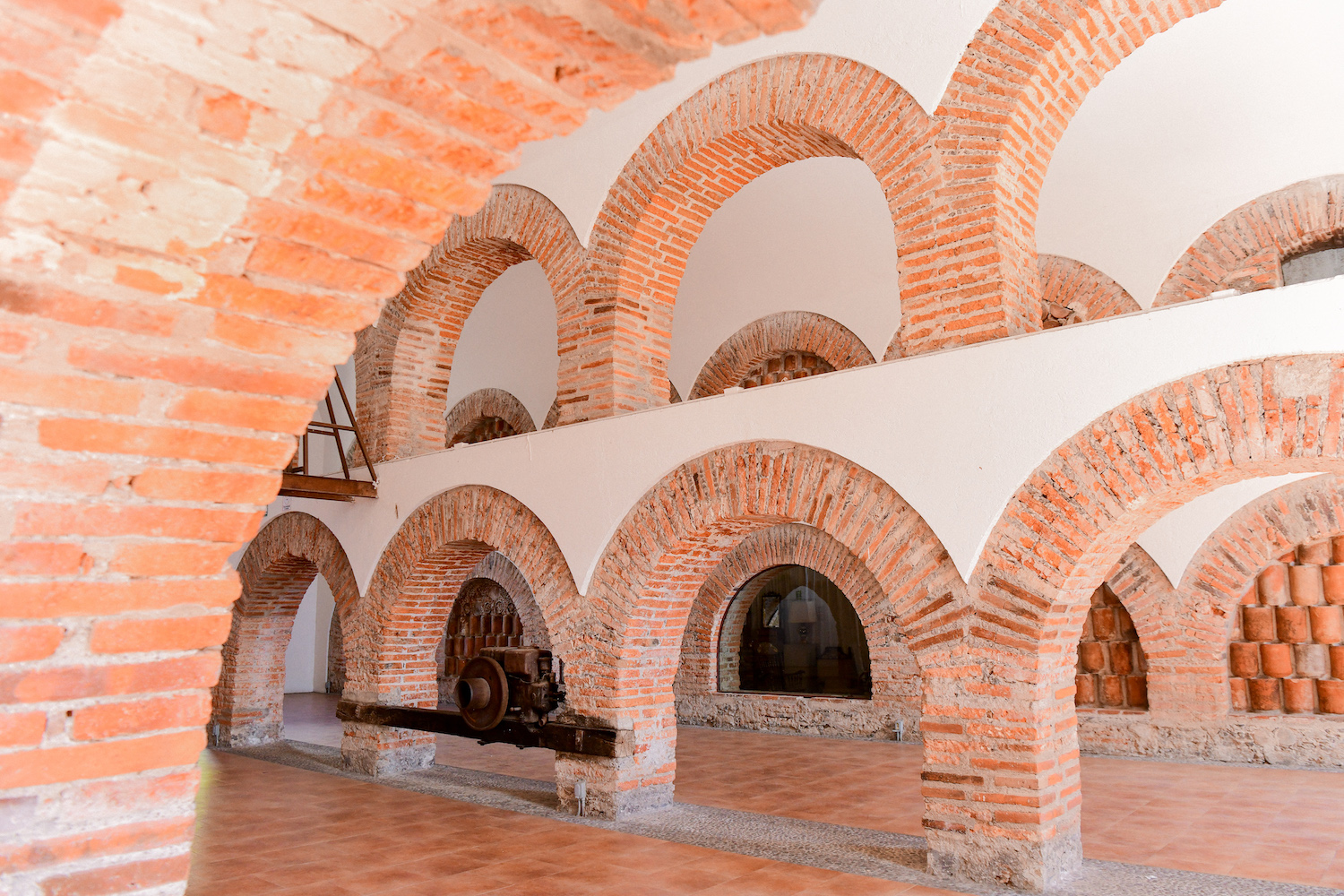
Spectacular arched architecture defines the hacienda where the museum is housed.
I ’d love to tell you that Comala hasn’t changed, that, when we visit, I’m able to slip back into the world of my childhood memories. In some ways, I am. There’s still the picturesque town square, bordered by little shops hawking local sea salt and fragrant leather huaraches. The white-and-yellow chapel where I was baptized stands as proud as ever. The people still wave hello to one another in the cobblestone streets.
However, cartel activity has increased in recent years. Colima now has one of the highest crime rates in Mexico. I don’t feel unsafe, but there’s a newly anxious undercurrent here.
And, at my abuela’s house, her absence is palpable. Spiny weeds have overtaken her once-verdant courtyard. I walk to the kitchen, though, and see the familiar dish basin. I dip my fingers in and remember her lifting me up so I could peer at the water’s surface. We didn’t need words for me to know she loved me.
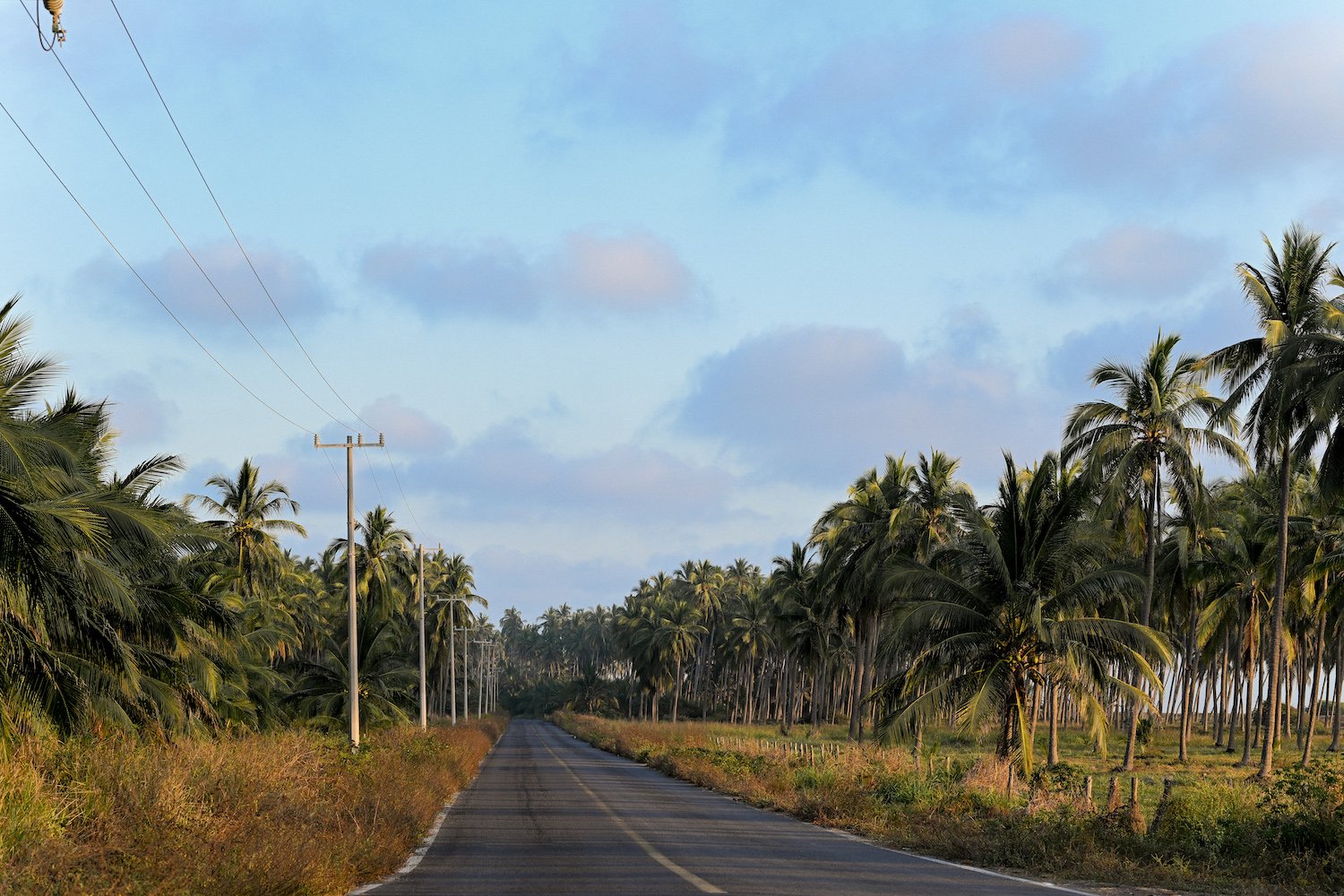
Dense coconut palm groves line many Colima roads.
When I was small, my family and I used to pass entire days at Las Hamacas del Mayor, a beachside restaurant in the agricultural region of Tecomán.
I recognize it the moment we pull up: the giant clamshell at the entrance, the pool with a dolphin-shaped waterslide, the tables laden with whole fried dorados.
After lunch, Celeste and I walk down the beach, its sand charcoal-black from the nearby volcano. In the distance, I think I see a rainbow flag. I figure it must mean something different here—after all, a gay bar? In rural Mexico? But as we get close, I spot drag queens dancing on a makeshift stage in Rockette bodysuits.
We stand and watch for a while. I want to tell Celeste what it means to me to share this with her. Though my mother’s family welcomes my girlfriend during the holidays, I’d always felt the unspoken difference of my queerness. Now I see I’m no longer alone.
It feels like too much, so I stay silent, but we both smile as the queens twirl.
My father lives in Comala, but I don’t see him. He remains a casual elephant in the room—I don’t talk about him, and neither does anyone else. Finally, over breakfast on my final day, Raquel spends a long time typing something on her phone. She passes it to me, a translation app open. “How are things with your dad?” the screen reads. “You don’t have to tell me, but you can always talk to me.”
“We haven’t spoken in years,” I admit in Spanish. “I don’t want to see him. Maybe next time.”
She nods. “Of course.” Then, fervently, in English: “I’m with you. Always. You come first.” Even after all this time goes unspoken.
Hours later at the airport, when I hug her tight and promise to come back soon, I hope she knows how much I mean it.
At home in San Diego, I dig through my jewelry dish, seeking a pair to replace my now-lonely hoop—only to find its errant twin. Apparently, I’d forgotten to put it on days before. It was never missing; simply waiting, primed to be rediscovered. I snap it into place. Then I let down my hair and look in the mirror. All the women in my family stare back.
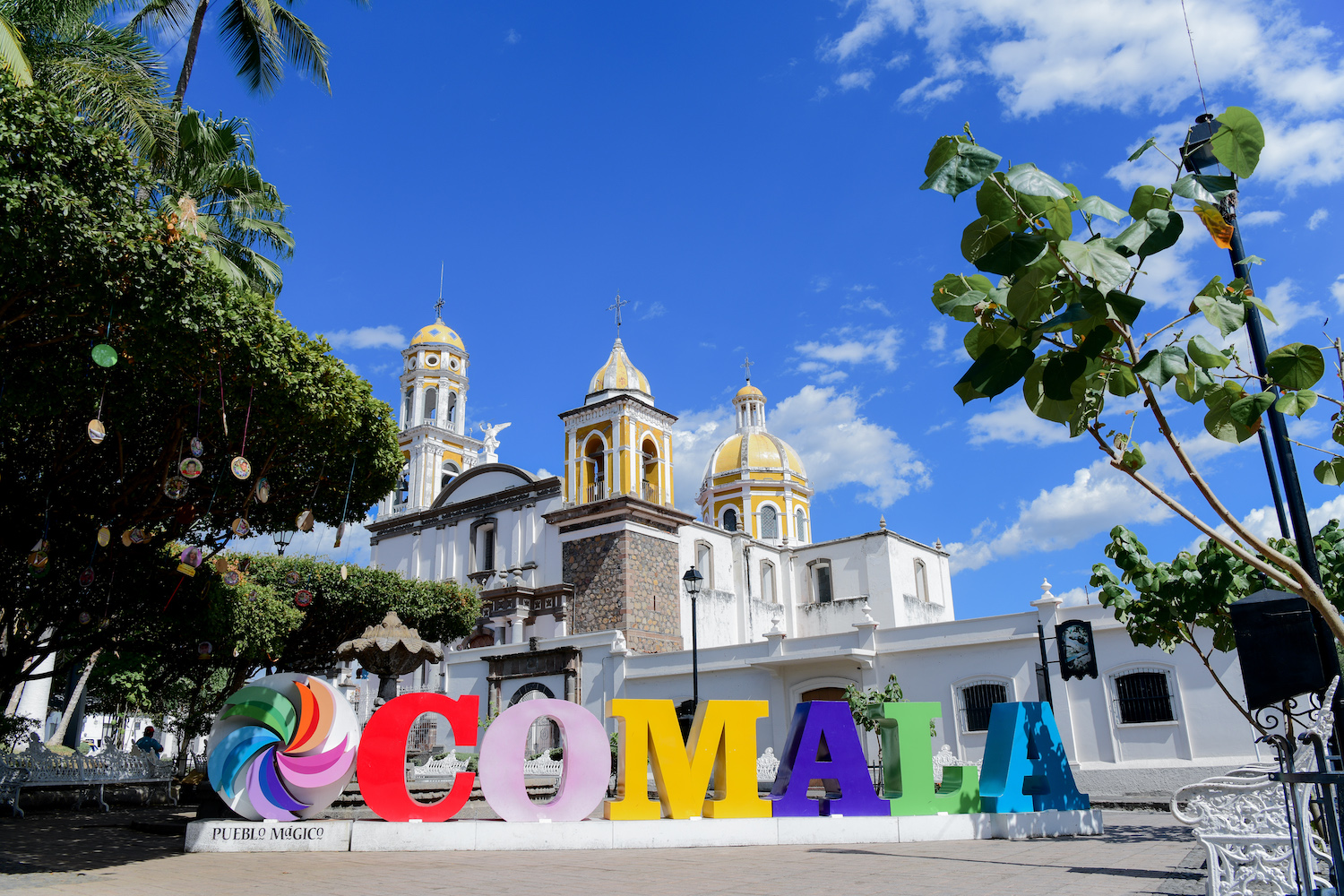
The town of Comala is perhaps best known for its stately white-and-yellow chapel.
Colima at a Glance
A beautiful green territory dwarfed by neighbors Jalisco and Michoacán, Colima has the smallest population in Mexico. Once home to a number of pre-colonial civilizations, the state is known for charming red pottery figures of round-bellied dogs. Two volcanoes—referred to as “fire and ice” because one is active and the other is dormant—perch at Colima’s border, and lush rainforests and orchards cover much of its land. Colima is Mexico’s primary producer of limes. Biodiversity abounds here, and visitors may see reptile species like crocodiles, iguanas, and sea turtles.
If you find yourself in Colima, visit the port city of Manzanillo to snorkel amid coral reefs and shipwrecks. About an hour from the state’s capital, El Tortugario Centro Ecologico de Cuyutlan gives tourists the chance to say hello to rescued sea turtles, take a boat tour of a lagoon teeming with wildlife, and even release freshly hatched turtles safely into the sea. See Colima’s famous dog statues and other archeological finds at the Colima City Regional History Museum. For more art and history, explore the small but lovely Alejandro Rangel Hidalgo Miguel University Museum, a garden-flocked hacienda showcasing the artist’s furniture designs and slightly surreal lithographs of children in traditional dress. Afterward, shop for artisan creations and sample local eats in the friendly little town of Comala.
